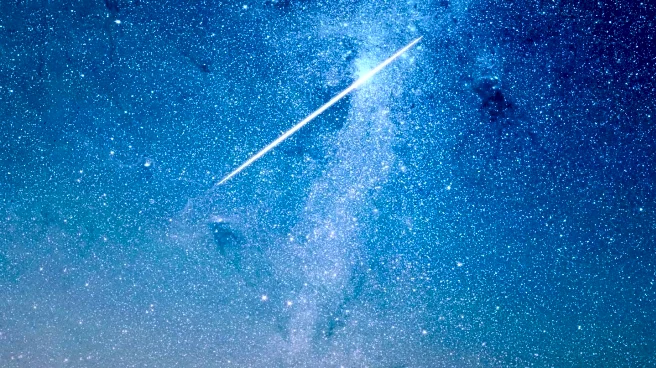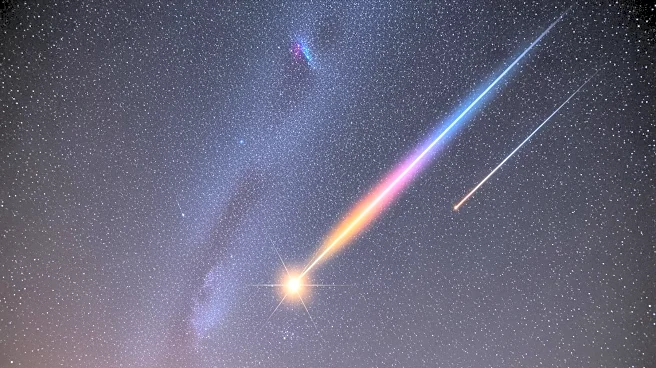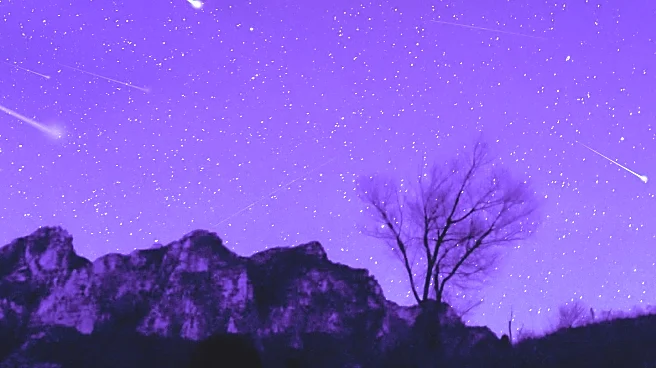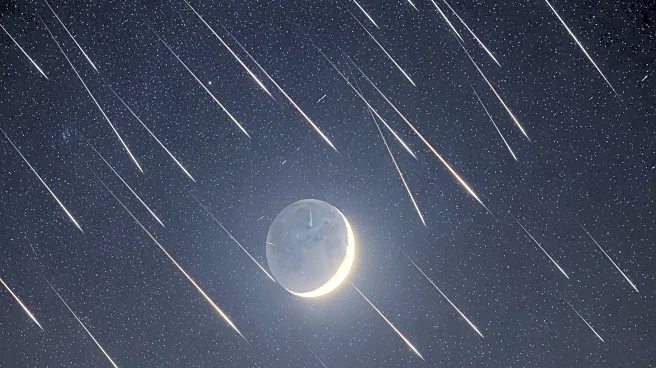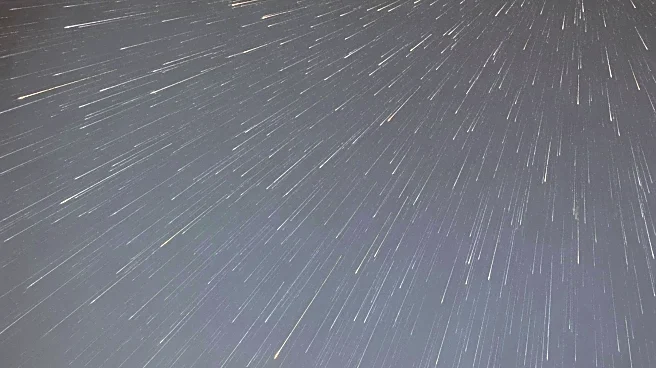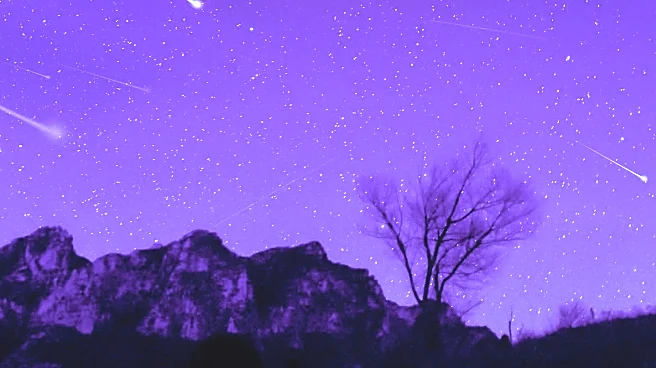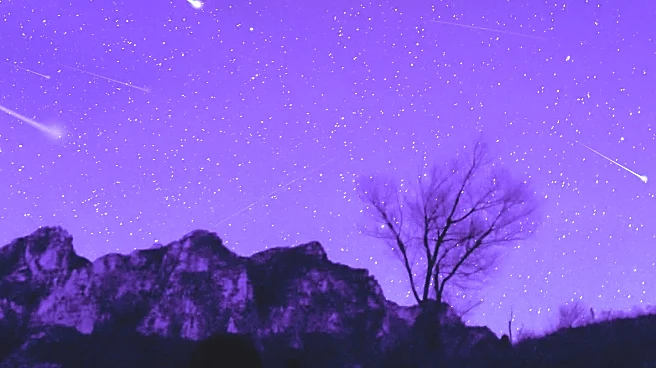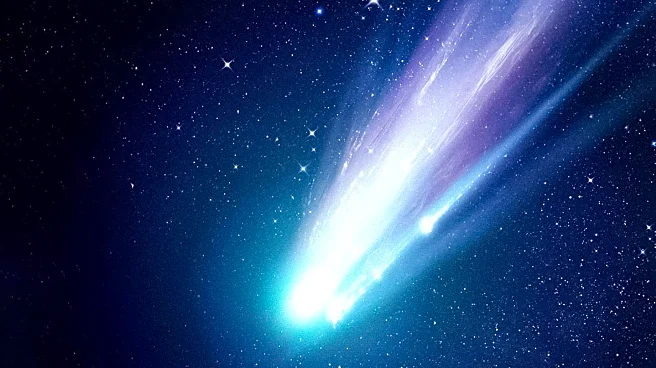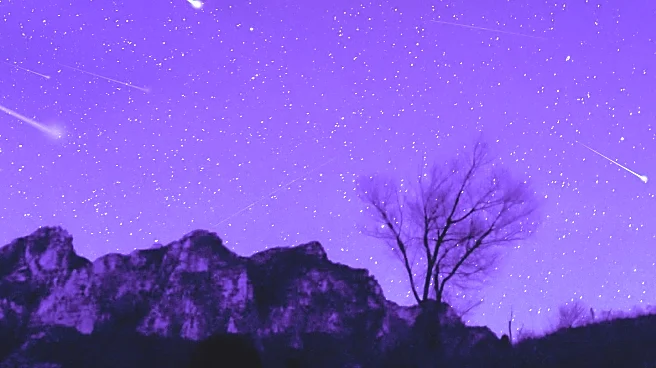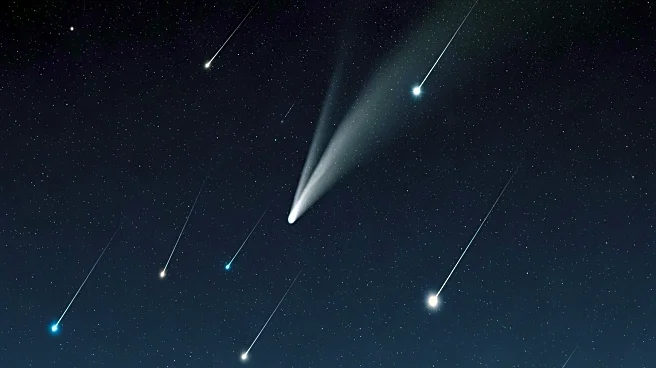What's Happening?
The Orionid meteor shower, an annual celestial event, is set to peak between October 21 and 23, offering a dazzling display of meteors visible across the United States. According to the American Meteor
Society, the Orionids are active from October 2 to November 7 each year, with this year's peak expected to produce at least 20 meteors per hour under optimal conditions. The meteors, known for their brightness and speed, can streak across the sky at speeds up to 148,000 mph. The best viewing times are in the early morning hours, starting after 1 a.m. through dawn, when the sky is dark and moonless, ensuring minimal interference from lunar light. The Orionids are named after the constellation Orion, as they appear to radiate from this region of the sky.
Why It's Important?
The Orionid meteor shower is a significant astronomical event that attracts skywatchers and enthusiasts across the country. It provides an opportunity for people to connect with the natural world and appreciate the beauty of the cosmos. The event is particularly important for educational purposes, as it can inspire interest in astronomy and science among the public. Additionally, the meteor shower offers a chance for communities to engage in outdoor activities, promoting social interaction and cultural appreciation of celestial phenomena. The visibility of the Orionids across the U.S. means that a large portion of the population can experience this natural spectacle, fostering a sense of wonder and curiosity about the universe.
What's Next?
As the Orionid meteor shower peaks, individuals and groups are likely to organize viewing events and gatherings to witness the spectacle. Astronomy clubs and educational institutions may host public events to educate attendees about the origins and significance of meteor showers. The clear skies provided by the new moon during the peak days enhance the viewing experience, encouraging more people to participate in outdoor stargazing activities. Following the Orionids, other meteor showers will continue to occur throughout the year, offering additional opportunities for skywatching and community engagement.
Beyond the Headlines
The Orionid meteor shower, originating from debris left by Halley's Comet, highlights the interconnectedness of celestial events and their impact on Earth. This annual occurrence serves as a reminder of the vastness of space and the ongoing interactions between celestial bodies. The event also underscores the importance of preserving dark skies, free from light pollution, to ensure future generations can enjoy such natural phenomena. Efforts to reduce light pollution can enhance the visibility of meteor showers and other astronomical events, promoting environmental awareness and conservation.
